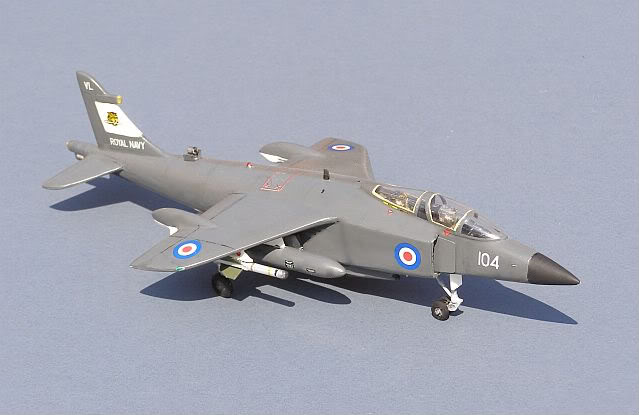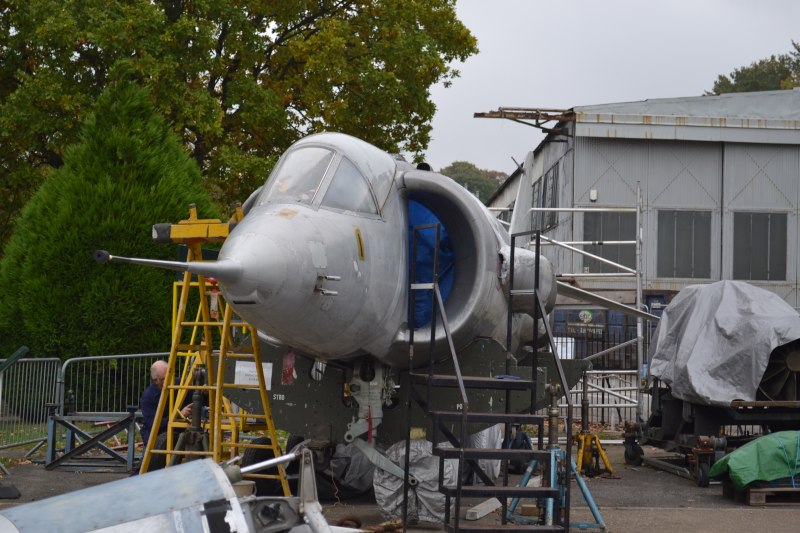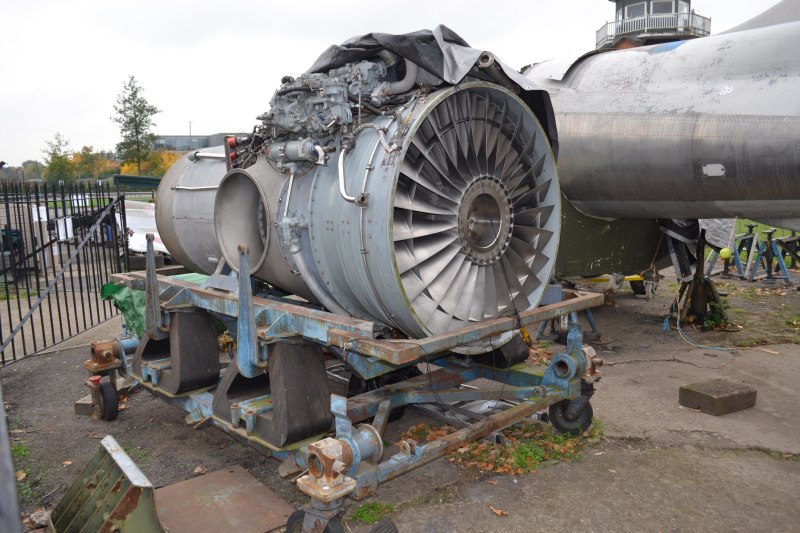First Generation Harriers and Prototypes
Return to Fred's Models main index
AV-8A Harrier - VMA 542 USMC, 1976.
ESCI, built straight out the box.
More than 30 years after they first appeared, ESCI’s Harrier kits remain the best option for a first generation Harrier. Easy to build and accurately moulded with well engineered and delicate detail, they have yet to be bettered by any other manufacturer..
The US Marines expressed a keen interest in the Hawker Siddeley Harrier right from the start, viewing its unique VSTOL abilities as an excellent way to enhance the capabilities of their assault ships and also, politically, a way to ensure the continuation of fixed wing USMC aviation in the face of budgetary pressure from the USN.
The first AV-8 squadrons stood up in 1971, based on assault ships but also developing an expeditionary “land away” capability that would see aircraft deploying ashore to forward bases as soon as these could be made secure.
In 1979, many USMC Harriers began to be converted to the AV-8C configuration, with enhanced avionics and the ability to carry a wider range of more modern weapons systems. By 1987, a new generation of more capable AV-8B Harrier IIs started to replace the earlier AV8As and Cs and these remain in service today, alongside the first squadrons of the new F-35Bs that will replace them.
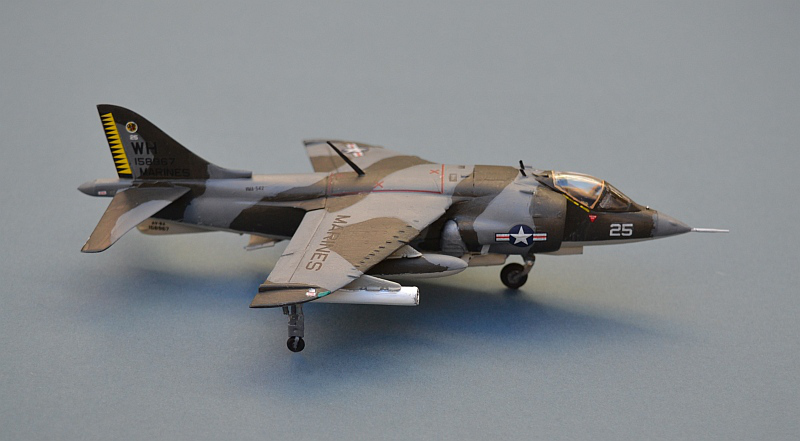
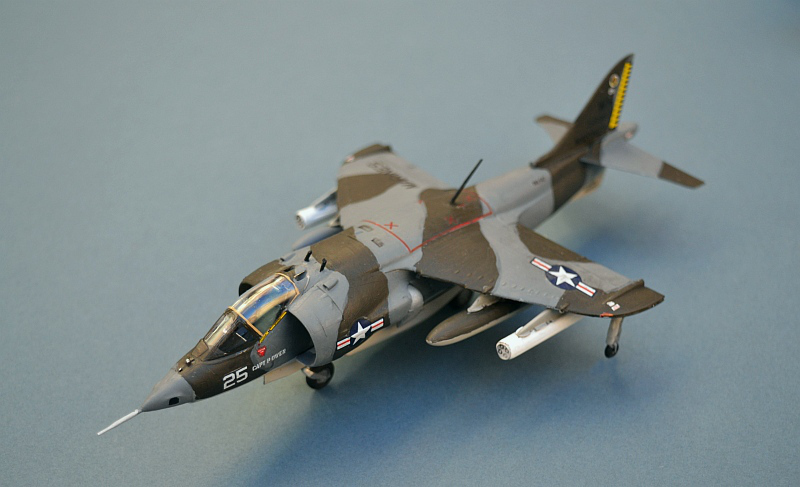
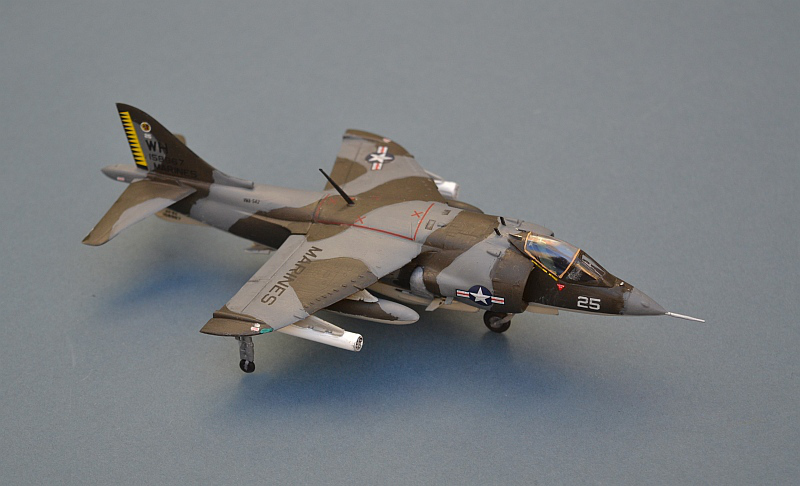
AV-8S Matador - Escuarilla 008 Armada Espaniola, 1976.
ESCI, built straight out the box.
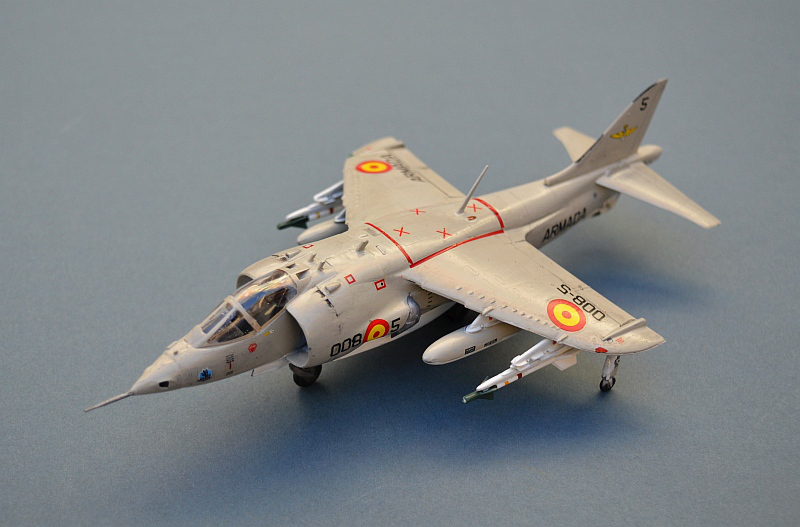
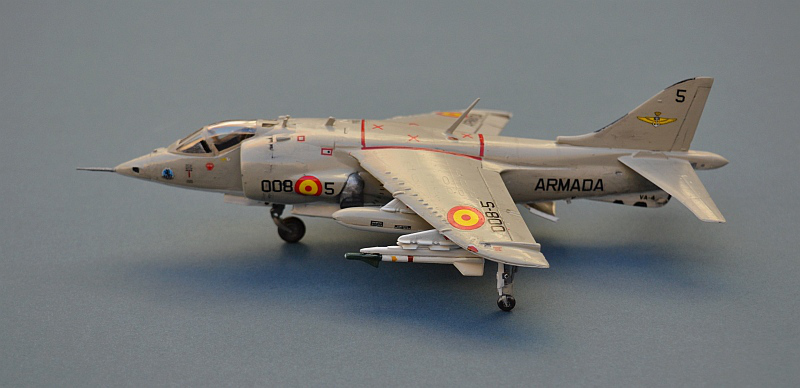

GR.3 Harrier - 1417 Flight, Royal Air Force Belize, 1987.
Fujimi, largely out the box, but with the Ejector seat modified to look more like a Mk9.
Fujimi's Harrier kits are reasonably accurate, but not easy builds. This one represents an aircraft of 1417 Flt, RAF Belize in the mid 1980s. Whilst I was serving in HMS LIVERPOOL, during our 1987 "West Indies Guardship" deployment (its a dirty job, but someone has to do it!), we exercised with 1417 Flt off the coast of Belize, providing our splash target for them to practice attacking fast moving sea-borne targets with Aden Guns and Rockets. Our activities attracted much interest from heavily armed (and not altogether friendly) Honduran and Guatemalan gunboats, which added a little spice to the proceedings.
The GR.3, easily recognised by its extended nose fairing to house the laser target marker and range finder, was the RAF's second major Harrier variant, with improved avionics and uprated engines. Harriers were deployed to Belize from 1981 to 1993, in response to potential threats from Guatemala and Honduras. The aircraft were ideally suited to the rough deployed conditions, if occasionally limited by the temperature.
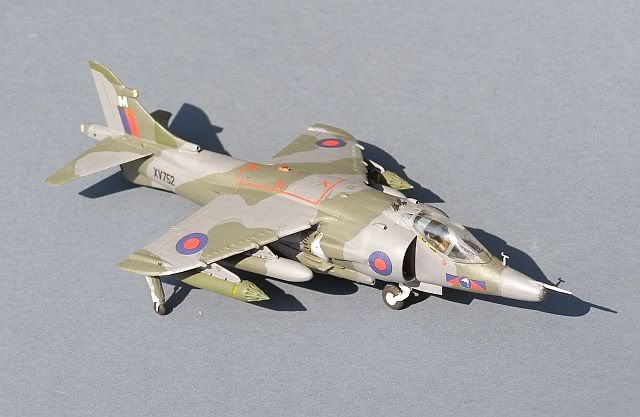
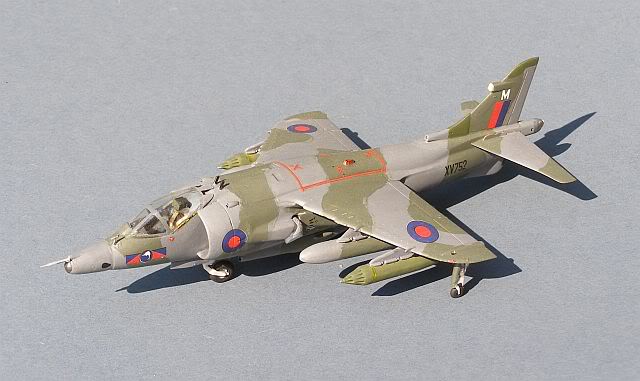
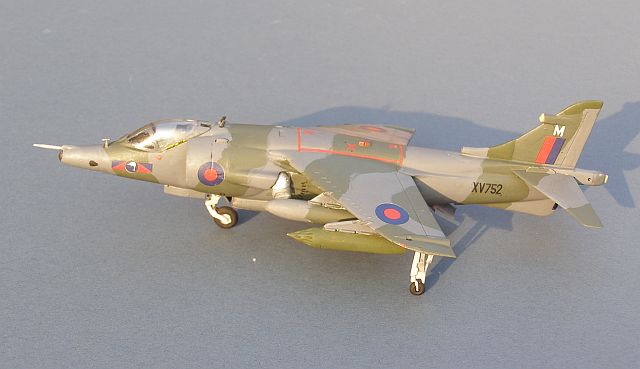
GR.1 Harrier, 1 Sqn, RAF Wittering, December 1970.
ESCI AV-8A, 1/72, with Sky decals.
The first operational variant of the Harrier family was the GR.1 and up-powered GR.1A. Original performance from this radical aircraft was marginal, requiring that only the most skilled RAF pilots flew the Harrier.
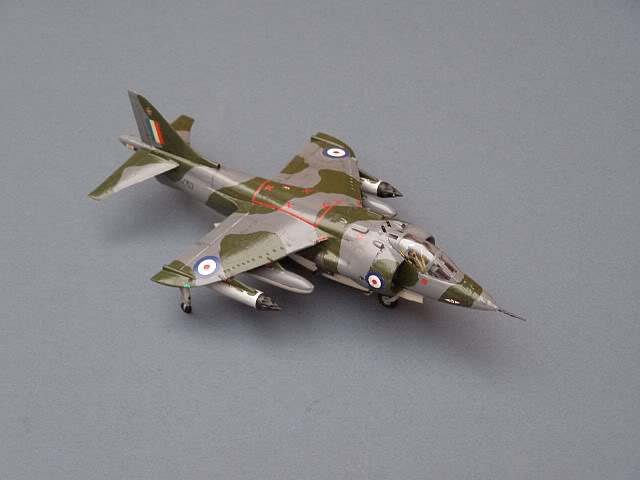
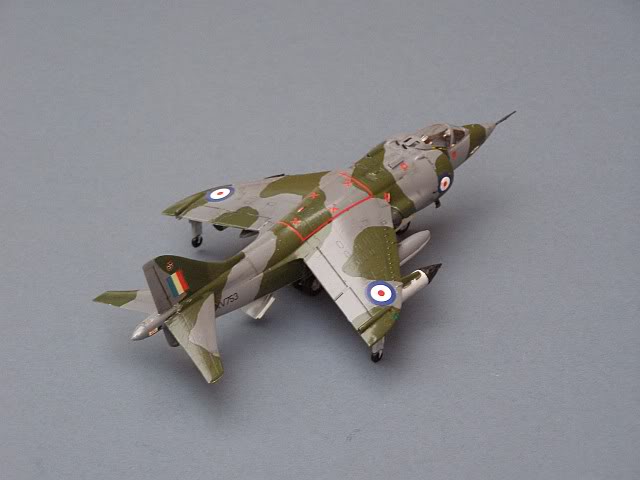
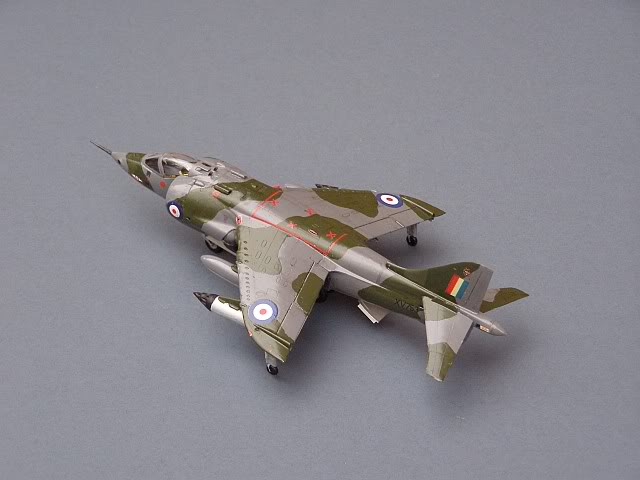
Airfix OOB
The P.1127 was a flying test-bed for the Pegasus engine and vectored thrust concept. As the Kestrel, nine aircraft were flown by a joint UK-US-West German evaluation squadron to determine tactics and capability for VSTOL operation. With the subsequent cancellation of the P.1154 (see below), the Kestrel was further developed into the operational GR.1 Harrier for the RAF.
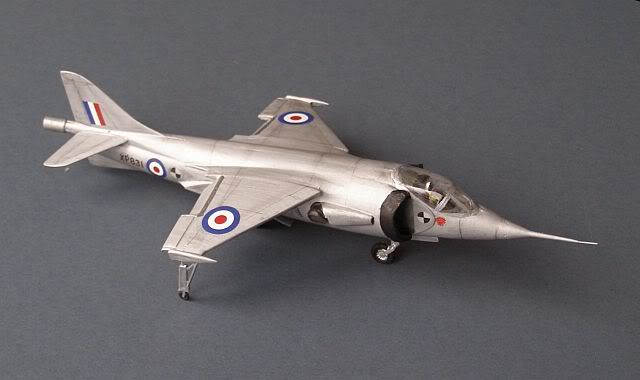
Maintrack Project X Vacform - what if? markings for 804 Sqn, FAA.
The P1154 was the planned in-service version of the experimental P.1127. Two very different variants were proposed, a single seater ground attack aircraft for the RAF and a twin seater interceptor for the Fleet Air Arm.
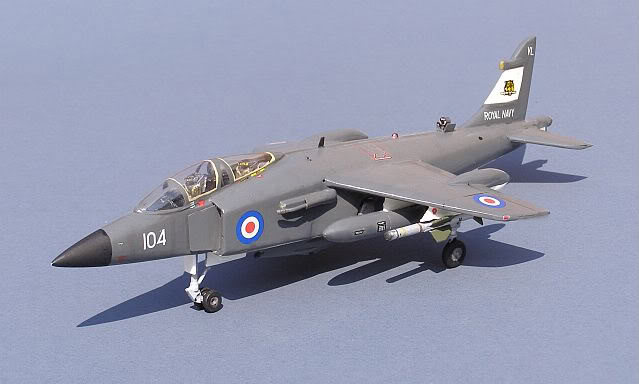
These conflicting requirements could not be reconciled in a single airframe, and the growing divergence of the 2 designs helped to ensure that this project, like the TSR.2 would never see the light of day. The Fleet Air Arm bought the excellent F-4K Phantom instead, whilst a basic austerity version, based on the P.1127 but using some of the 1154 systems, was purchased for the RAF as the Harrier GR.1, and eventually developed into the superb Sea Harrier for the Fleet Air Arm.
